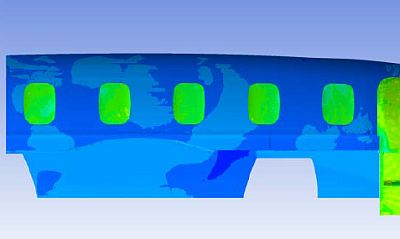
CFD transient simulation of the Piaggio P180 internal cabin ventilation
Carretta Mauro - Consorzio SIRE (Italy)
Cravero Carlo - Università di Genova (Italy)
Briasco Giuseppe - Consorzio SIRE (Italy)

PRESENTATION
Abstract
The fully 3D and unsteady nature of the airflow inside an aircraft cabin constitutes a complex case for the CFD simulation. In this work a highly detailed geometry model of the Piaggio P180 Avanti II aircraft cabin has been adopted for the unsteady simulation of the internal flow. Several resources have been spent to build the cabin geometry model starting from every single aircraft component derived from the original CAD model. The scope of the CFD analysis is to increase the passengers comfort, investigating the thermal behavior of the cabin during a transient cooling phase after the air conditioning system startup with the aircraft located at tropical regions, exposed to direct sunlight (for prolonged time) at ground idle condition. To obtain a model setup as close as possible to the existing cabin configuration, several features have been implemented in the case-study. The fuselage side walls have been subdivided into several patches each one with different transmittance value according with the installed insulating panels in the current aircraft structure. The effects of the seats presence (and their related thermal inertial properties) have been considered in the simulation. The air conditioning intakes have been modeled with a high level of detail and they are located above the seats, inserted in the existing housing; they are set-up as of cold air inlets. The cabin internal furnishing has been modeled in order to keep a high level of accuracy in the simulation of the real configuration set up. The adopted computational mesh has been therefore generated to be very fine near the internal objects and in the most relevant areas for the ventilation system; a tetrahedral unstructured grid with refinements on local discontinuities (furnishings details, seats components, …).
The unsteady flow simulation of the entire cabin during the cooling phase has been performed on a HPC Linux-based cluster and requires about 3 days of runtime. A detailed post-processing phase has allowed to identify the aircraft components that mostly affect the flow motion inside the cabin. This aspect is important in order to modify the existing aircraft configuration moving or substituting the cabin components or modifying the aircraft fuselage insulation layers both to increase the passengers comfort and to limit the incoming heat flux from the external environment.
